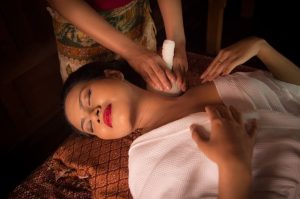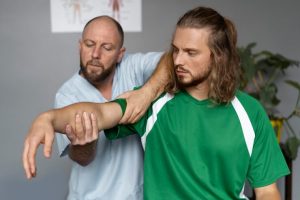Elderly Massage Therapy
Elderly massage therapy San Diego services focus on addressing the specific needs of older adults through gentle, therapeutic touch. This specialized form of massage therapy considers age-related changes in skin texture, bone density, circulation, and muscle mass. Licensed massage therapists who work with seniors receive additional training to understand how aging affects the body’s response to therapeutic touch.
The primary goal of elderly massage therapy involves improving circulation, reducing muscle tension, and promoting relaxation without causing discomfort or injury. Unlike traditional massage techniques that may use firm pressure, elderly massage employs lighter pressure and modified techniques to accommodate sensitive skin and fragile bones.
Pre-Session Consultation Process
Your first elderly massage therapy session begins with a thorough consultation. The massage therapist will review your medical history, current medications, and any health conditions that might affect treatment. This conversation helps identify areas of concern such as arthritis, osteoporosis, diabetes, or cardiovascular issues.
During this consultation, you’ll discuss your comfort level with pressure, temperature preferences, and specific areas where you experience pain or stiffness. The therapist will explain which techniques work best for your individual needs and answer any questions about the treatment process.
Preparation & Room Setup
The massage room maintains a comfortable temperature, typically between 72-75 degrees, as older adults may be more sensitive to temperature changes. Soft lighting creates a calming atmosphere without being too dim for safety. The massage table includes extra padding and support cushions to ensure comfort throughout the session.
Your massage therapist will explain the undressing process and provide privacy while you prepare. You only need to undress to your comfort level, and professional draping ensures modesty throughout the session. Many elderly clients prefer to keep undergarments on, which therapists accommodate easily.
Massage Techniques & Modifications
Elderly massage therapy utilizes modified Swedish massage techniques with lighter pressure than standard treatments. The therapist begins with gentle effleurage strokes to warm the tissues before progressing to slightly deeper techniques. Kneading movements help improve circulation and reduce muscle tension without causing discomfort.
Joint mobilization techniques help maintain range of motion in areas affected by arthritis or stiffness. These movements are slow and controlled, never forcing joints beyond their comfortable range. The therapist constantly monitors your response and adjusts pressure accordingly.
Special attention goes to areas commonly affected by aging, including the neck, shoulders, lower back, and legs. Gentle compression techniques help improve circulation in the extremities, which many elderly clients find beneficial for reducing swelling and promoting warmth.
Communication Throughout Treatment
Open communication remains essential during elderly massage therapy. Your therapist will check in regularly about pressure, comfort level, and temperature. You should speak up immediately if anything feels uncomfortable or if you need to change position.
Many elderly clients benefit from explaining what they’re experiencing during treatment. This feedback helps the therapist understand which techniques provide the most benefit and allows for real-time adjustments to the session.
Duration & Positioning Options
Most elderly massage therapy sessions last 60 minutes, though some clients prefer 30-45 minute sessions depending on their stamina and comfort level. The therapist monitors for signs of fatigue and can adjust the session length accordingly.
Positioning modifications accommodate various physical limitations. Clients who cannot lie flat may receive massage in a semi-reclined position using bolsters and pillows for support. Side-lying positions work well for those with breathing difficulties or back problems.
Post-Session Care & Recommendations
After your elderly massage therapy session, the therapist will provide guidance on post-treatment care. This includes recommendations for hydration, gentle movement, and rest. Some elderly clients experience mild soreness for 24-48 hours, which is normal as the body adjusts to improved circulation.
Your therapist may suggest specific stretches or exercises to maintain the benefits of massage between sessions. They’ll also discuss optimal frequency for ongoing treatment based on your individual needs and health status.
Benefits You Can Expect
Regular elderly massage therapy sessions provide numerous benefits including improved circulation, reduced muscle tension, better sleep quality, and decreased anxiety. Many clients report improved mood and increased energy levels following consistent treatment.
Pain management represents another significant benefit, particularly for conditions like arthritis, chronic back pain, or general stiffness associated with aging. The gentle techniques help reduce inflammation and promote healing in affected tissues.
Safety Considerations
Elderly massage therapy requires special safety considerations that trained therapists understand thoroughly. Blood pressure monitoring may be necessary for clients with cardiovascular conditions. Diabetic clients need careful attention to avoid injury, as healing may be slower.
Your massage therapist will be aware of medications that might affect your response to treatment, such as blood thinners or pain medications. They adjust techniques accordingly to ensure your safety throughout the session.
Scheduling Your First Session
When booking your first elderly massage therapy session in San Diego, choose a therapist with specific training in geriatric massage. Discuss any concerns or special needs when scheduling to ensure proper preparation. Many practices offer flexible scheduling to accommodate medical appointments and energy levels.
Consider scheduling your first session at a time of day when you typically feel most alert and comfortable. This helps ensure you get the maximum benefit from the treatment and can provide the best feedback to your therapist about the experience.







